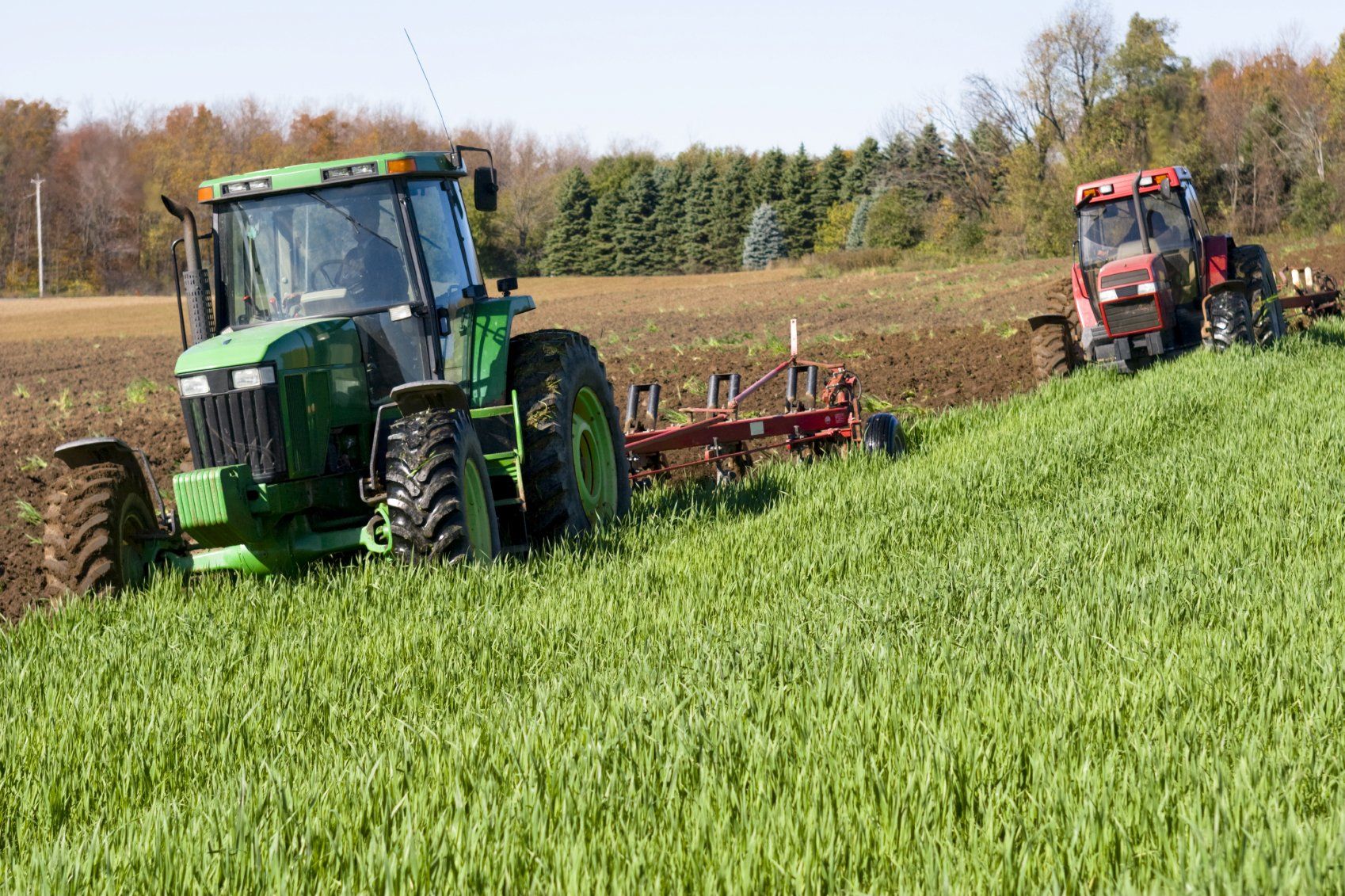Understanding the Control of Asbestos Regulations 2012: A Guide for Farmers
Living and working on a farm all too often leads to the accidental non compliance with the control of asbestos regulations 2012 due to not recognising it as a non domestic property

Introduction to the Control of Asbestos Regulations 2012
As a farmer in the UK, it is crucial to understand and comply with the Control of Asbestos Regulations 2012. These regulations were put in place to protect individuals from the harmful effects of asbestos exposure. In this guide, we will explore the risks of asbestos in farm buildings, the types of asbestos commonly found on farms, and the importance of developing an Asbestos Management Plan. By prioritising asbestos management, you can ensure the safety of yourself, your employees, and your farm.
Understanding the risks of asbestos in farm buildings in the UK
Farm buildings in the UK often contain asbestos, which was widely used in construction until its ban in 1999. Asbestos can be found in various forms, including Asbestos Insulating Board, Asbestos Cement, Asbestos Ceilings, Asbestos Flooring, and Asbestos Roofing. While these materials were once popular due to their durability and fire-resistant properties, they pose a significant health risk when their fibres are released into the air and inhaled. It is crucial to identify and manage asbestos-containing materials on your farm to prevent exposure and protect the health of everyone on your premises.
Types of asbestos commonly found on farms - Asbestos Insulating Board, Asbestos Cement, Asbestos Ceilings, Asbestos Flooring, Asbestos Roofing
- Asbestos Insulating Board (AIB): AIB was commonly used in farm buildings for insulation purposes. It can be found in wall panels, ceiling tiles, and partition walls. AIB poses a significant risk as its fibres can easily become airborne if damaged or disturbed.
- Asbestos Cement: Asbestos Cement was widely used in the construction of roofs, walls, and pipes. It is a mixture of cement and asbestos fibres, providing strength and durability. However, over time, the cement may deteriorate, releasing asbestos fibres into the air.
- Asbestos Ceilings: Many farm buildings have asbestos-containing ceilings, particularly those constructed before the 1990s. These ceilings may contain asbestos in the form of tiles, panels, or textured coatings. Any disturbance or deterioration of these materials can lead to the release of harmful asbestos fibres.
- Asbestos Flooring: Asbestos was commonly used in flooring materials such as vinyl tiles, linoleum, and backing materials. If these materials are damaged or removed without proper precautions, asbestos fibres can be released, posing a risk to those in the vicinity.
- Asbestos Roofing: Asbestos roofing materials were prevalent in farm buildings due to their fire-resistant properties. Corrugated asbestos cement sheets were commonly used for roofing. However, weathering and deterioration can cause these sheets to release asbestos fibres, which can be inhaled by individuals on the farm.
The dangers of asbestos on Farms
Asbestos poses severe health risks, including various forms of cancer and respiratory diseases, such as mesothelioma and asbestosis. The inhalation of asbestos fibres can lead to these life-threatening conditions, and the latency period between exposure and the development of diseases can be several decades. It is essential to understand the dangers of asbestos and take proactive measures to protect yourself, your employees, and your farm.
Ensuring the safety of employees - the importance of an Asbestos Management Plan
To protect your employees from asbestos exposure, it is crucial to have an Asbestos Management Plan in place. This plan outlines how asbestos-containing materials will be managed, monitored, and maintained on your farm. It includes regular inspections, risk assessments, and safe work procedures to minimise the risk of exposure. By having an Asbestos Management Plan, you demonstrate your commitment to the health and safety of your employees.
Steps for keeping yourself and your employees safe from asbestos exposure
- Identification and Assessment: Conduct a thorough survey of your farm buildings to identify asbestos-containing materials. This can be done through an Asbestos Management Survey, which involves sampling and testing suspected materials. Once identified, assess the condition and risk associated with each material.
- Risk Management: Develop a plan to manage the identified asbestos-containing materials. This may involve encapsulation, enclosure, or removal by licensed professionals. Implement control measures to prevent accidental damage or disturbance of asbestos materials.
- Employee Training and Awareness: Provide comprehensive training to your employees regarding the risks of asbestos and the safe procedures to follow when working near or with asbestos-containing materials. Regularly communicate and reinforce the importance of asbestos safety.
- Regular Monitoring and Maintenance: Monitor and maintain asbestos-containing materials regularly to ensure their integrity. This includes periodic inspections, record-keeping, and prompt action in case of any damage or deterioration.
- Safe Work Practices: Establish strict protocols for working with asbestos, including the use of personal protective equipment, proper handling and disposal of asbestos waste, and the implementation of engineering controls to minimise exposure risks.
Maintaining legal compliance with the Control of Asbestos Regulations 2012
As a farmer, it is essential to maintain legal compliance with the Control of Asbestos Regulations 2012. Non-domestic premises, including farms, are not exempt from these regulations. Failure to comply can result in severe consequences, including legal prosecution and financial penalties.
Developing an Asbestos Management Plan and conducting an Asbestos Management Survey
To comply with the Control of Asbestos Regulations 2012, you must develop an Asbestos Management Plan specific to your farm. This plan should include a comprehensive assessment of asbestos-containing materials, control measures, procedures for maintenance and monitoring, employee training, and record-keeping. Additionally, it is crucial to conduct an Asbestos Management Survey to identify and assess the presence of asbestos on your farm. This survey will provide valuable information for the development of your Asbestos Management Plan.
Managing asbestos during refurbishment and maintenance work
During refurbishment or maintenance work on your farm, it is essential to have proper procedures in place to manage asbestos. Any work that may disturb asbestos-containing materials should be carefully planned and executed by licensed professionals. The Control of Asbestos Regulations 2012 requires notification to the appropriate authorities before undertaking any significant refurbishment or demolition work. Failure to manage asbestos during such activities can result in the release of asbestos fibres and endanger the health of workers and others on the farm.
Importance of maintaining legal compliance and the consequences of failing to do so
Maintaining legal compliance with the Control of Asbestos Regulations 2012 is of utmost importance for farmers. Failure to comply can have serious consequences, including legal prosecution, financial penalties, damage to your reputation, and, most importantly, harm to the health of your employees. By prioritising asbestos management and adhering to the regulations, you ensure the safety of your farm and everyone associated with it.
The potential impact of failure to manage asbestos on your Farm - lost time and potential prosecution
Failure to effectively manage asbestos on your farm can result in lost time, disruption of operations, and potential prosecution. If asbestos fibres are released due to neglect or improper handling, the farm may need to be shut down temporarily for remediation, causing financial losses and reputation damage. Additionally, legal prosecution can lead to heavy fines and penalties, further impacting the financial stability of your business. By investing in proper asbestos management, you can avoid these potential risks and protect the future of your farm.
Conclusion: The importance of prioritising asbestos management in farming
In conclusion, understanding and complying with the Control of Asbestos Regulations 2012 is crucial for farmers in the UK. Asbestos poses significant health risks, and farm buildings often contain various asbestos-containing materials. By developing an Asbestos Management Plan, conducting regular inspections, and implementing safe work practices, you can protect yourself, your employees, and your farm from the dangers of asbestos exposure. Maintaining legal compliance is essential to avoid potential prosecution and ensure the long-term success of your farming business.
Take a proactive step today by contacting Consulo Compliance for your FREE asbestos compliance audit and safeguard your farm's future.









